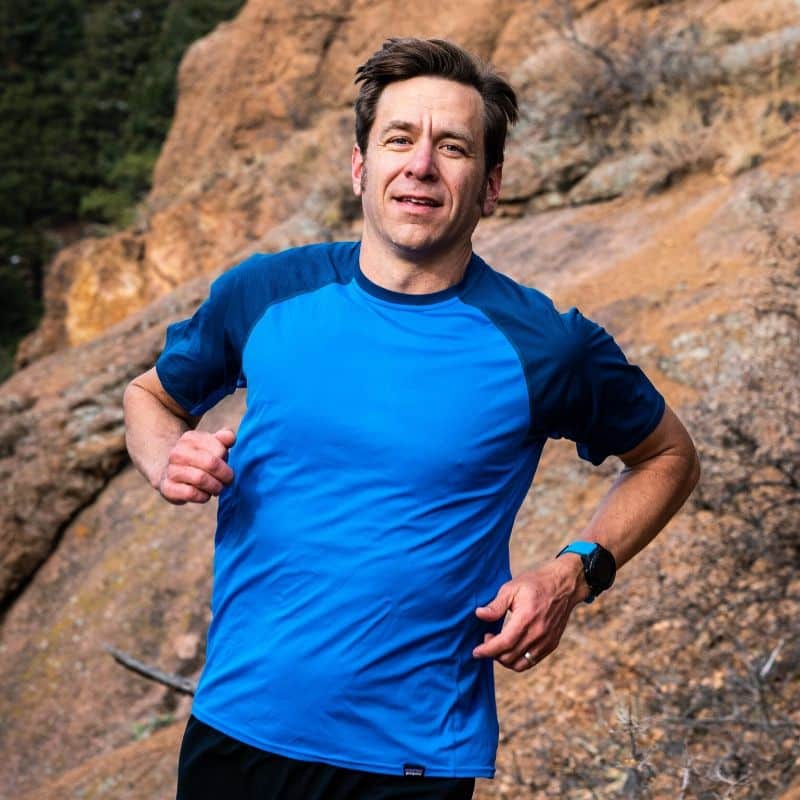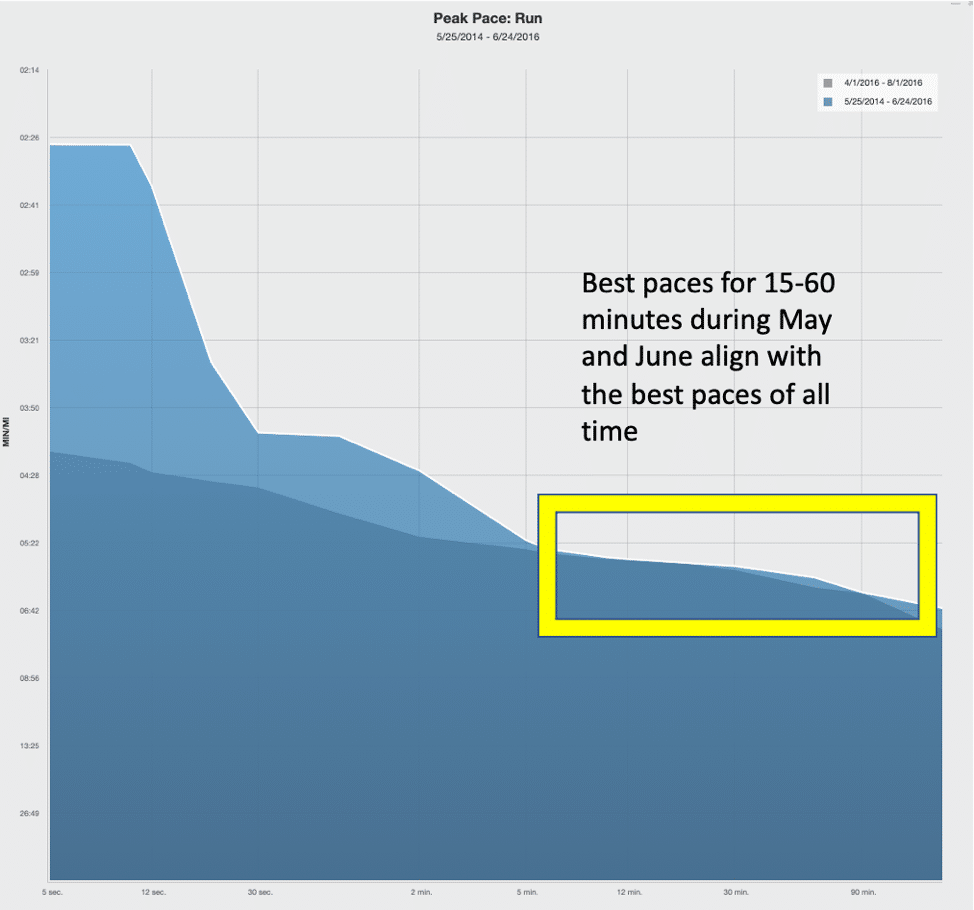
Zooming Out: Finding and Leveraging Patterns in Training Data
By Jason Koop,
Head Coach of CTS Ultrarunning
Let’s face it, for many athletes it’s been a long time since you’ve had the opportunity to toe the start line. And, as races are drawing closer, athletes’ anxiety about their fitness is building. They look at their training logs through a lens of opportunities lost. The missed long runs and the foregone interval workouts unfortunately become the focal points as they decide what to do next. All too often, athletes fall prey to the makeup game, where missed miles on one day are compounded and “made back up” the following day. During this perceived crunch time for athletes, I emphasize a critical skill for navigating the final weeks of training: Zooming Out.
What is Zooming Out
Zooming Out, from a training perspective, means looking at your training through the lens of several months, not several days. By doing this, you are looking at the entirety of your training development and can drill down your future training needs in the areas of volume, performance and key workouts. The day to day fluctuations in your training runs, how you feel, and how fast you are running make little difference in this exercise. What matters more are the trends over these longer periods of time. This is an area where maintaining a training log of some sorts is of critical value. If you have over 2 years of training data available, you are going to be able to glean plenty of valuable information from the techniques described below. However, even with a minimum of 6 months of training log information, you can still put these patterns to use. If you don’t have a training log, well, continue reading and use this as motivation to get one going.
Your training never repeats, but it always rhymes
We’ve all heard this phase, “I don’t do well with XYZ training.” This could be interval work, climbing, high volume work or any other component of training. To compound things further, many athletes make the mistake of incorporating the training they hate the most (and adapt to the least) right before a critical race. What if I told you there way a way to avoid such a discrepancy?
The biggest value of taking this broader look at your training is finding out when you were training well, when you were not, and what themes you can pick up over long periods of time. Intuitively, you likely know when you were setting PRs, Strava Segment records and jumping out of bed ready to smash the next workout. You also likely know times when you were in a funk and more likely to hit the snooze button. While intuition will tell part of the story, you can also look at these patterns analytically by scrutinizing data like Normalized Graded Pace and Strava Segments. Picking up on these patterns and recognizing what training was going on at the time is the critical information you get out of Zooming Out. You can use both the subjective and objective data to determine trends, but I like to see both trend in the same direction before coming to any conclusions.
By doing this, you take a lot of the guesswork out of planning your training. Humans are habitual creatures, and we react to training with very similar patterns and outcomes year after year after year. It’s never exactly the same, but it’s always similar. In this way, your training never repeats, but it always rhymes. You can determine if you react well to high volume or higher intensities, or are simply miserable once the heat hits during the summer. By analyzing all of these rhyming patterns, you can leverage your strengths and weaknesses so that you can plan more effective training.
Finding subjective feedback
In coaching trail and ultrarunners, I firmly believe that an athlete’s subjective feedback is a better performance indicator than any of the objective metrics such as pace, Normalized Graded Pace (NGP), or even Strava Segments. This is because in trail running, your performance is always impacted by the conditions of the trail, and to a lesser extent, the environment. We’ve all been on trails that we zoom up one week only to stumble up the next because the rain has piled rocks and debris on the previously smooth single track. Similar calamites exist when the trails are snow covered, or when there is a big temperature swing in one direction or another. So, my first step in picking up on training patterns begins with analyzing subjective feedback. This is where keeping a consistent training log really shines. If you have your training log in a searchable format, and have been consistently updating your training log with post-workout subjective feedback, you can use a simple search for the words good/great or bad/horrible to pick on patterns in your training.
CTS Coaches use TrainingPeaks to prescribe and analyze training for all of our athletes. It has a nifty search function that can narrow workouts down by type, duration, elevation gain and a host of other variables, and then perform a keyword search for this critical subjective feedback. In the example below, I am searching for all of this athlete’s long runs and workouts that went really well. I found a cluster of them in the late May and early June timeframe. I would then go back to that timeframe and see what the athlete was doing at the time. Turns out, it was SteadyStateRun work. I now have a piece of information I can use to drive future training: the athlete adapts to and feels good during long runs while doing SteadyStateRun work.
Finding objective feedback
Your next step in the Zoom Out process is to look at the objective data to see if it either confirms or contradicts the subjective feedback. There are a host of ways to do this, including looking at an array of your Strava Segments to see if they are trending faster. For the athlete example above, I would search for Strava Segment times that align with the time-at-intensity for those workouts (2X30 in this case). However, as much fun as those Strava Segments are to track, TrainingPeaks once again rises to the top with a more robust analysis. In these cases, I like to look at the pace-duration curve for the athlete over a specific period of time and compare it to the entirety of training. The pace-duration curve merely plots the athlete’s best paces over all timeframes across any period of time you define (note you can use NGP in WKO5 for advanced users). The pace duration curve for this particular athlete is below.
► Free Ultrarunning Training Assessment Quiz
Take our free 2-minute quiz to discover how effective your training is and get recommendations for how you can improve.
In this chart, I am comparing the best paces over all durations for the May/June timeframe with the entire training history of the athlete. Rather than looking at individual workouts, it zooms the lens and lets me look at the entirety of training to create big broad comparisons. When the athlete is training well, the lines will overlap on the durations of the intervals you are performing, indicating that they are running their fastest ever for those types of intervals. For this athlete, he/she is running their best paces for 15-60 minutes (which would be the duration for SteadyStateRuns) right at the exact same timeframe as all of the ‘good’ feedback obtained in the earlier search.
Enjoying This Article? Get More Free Running Training Tips
Get our coaches' best training advice, delivered straight to your inbox weekly.
This objective feedback can either confirm or contradict the subjective feedback gathered earlier. In this case, they line up because the performance matches the subjective feedback. Therefore, we can draw the conclusion that the athlete is training well, improving and setting their best times while doing SteadyStateRun work.
What to do: Work Weaknesses to Strengths
After you have zoomed the lens out, you’ve likely found some patterns related to times you are training very well, and times you are not. The next step is to put these patterns into action. Luckily, the solution is simple: do the things you stink at earlier in the season and the things that you are good at later, as goal events draw near. If you are approaching your key race, you can tailor your workouts toward these strengths in alignment with any other long range planning you have done. For the athlete example listed earlier, I would have him/her do SteadyStateRun work as any goal races approach as it seems to be a workout that he/she adapts from.
So, regardless of if you are approaching a race or designing your next training phase, take a moment to Zoom Out your training. Look at big patterns and pictures and determine when you were running well and when not. Look at both the subjective and objective feedback to see if these rhyming patterns persist. Then, design your training to progress from weaknesses to strengths. This will keep you in the habit of doing the work that is the most productive at the right times as well as avoid training mistakes from phase to phase and when races approach.




Comments 2
Pingback: How Investing in Bitcoin and Ultramarathon Training are Shockingly Similar - Jason Koop
What is the proper course of action to take when what you have written above conflicts with what you have written previously of doing the most race-specific training closest to the race? For example, if a runner responds well to, and enjoys, RunningIntervals but has a 100k race twelve weeks out?